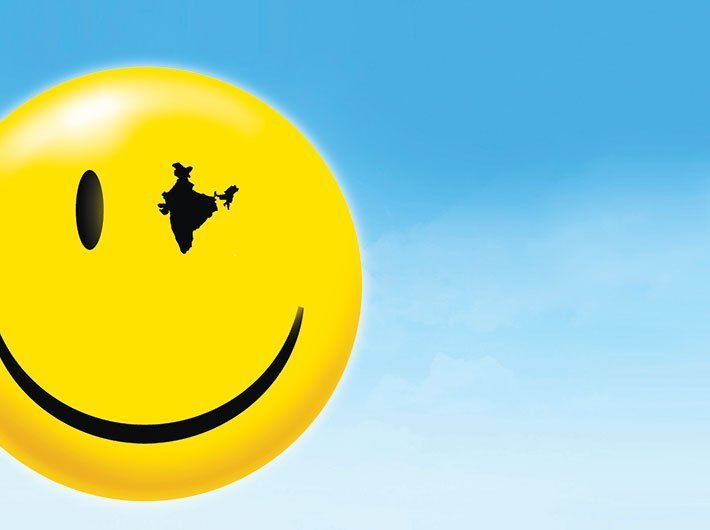Low position in global list may also be due to intra-country heterogeneity: looking at a state-level shows what needs to be done
The World Happiness Report 2022 ranks India at 136th position, or tenth from the bottom of the list. Among 146 countries, Finland tops the list, followed by Denmark, Iceland, Switzerland, the Netherlands and Luxemburg, according to the report released recently. India’s performance created a stir as it was widely criticized by the opposition parties. They attributed the low ranking to growing poverty, unemployment, and diminishing social harmony. While the cross-country comparison does pose a grim picture, it is also pertinent to note that this masks the intra-country heterogeneity. For a country as diverse as India, we delve deeper to understand the state-wise ranking (from India’s happiness report in 2020) and what lessons one could learn from it.
Did you know that according to India’s Happiness report 2020, Uttar Pradesh is a happier state than Tamil Nadu and West Bengal is a happier state than Goa? India’s happiness report was prepared between March 2020 and July 2020. Its relevance gains further traction now because the lessons learned from the happier states can be applied to improve India’s current happinessworld ranking. According to the report, Mizoram is the highest-ranked state, followed by Punjab and Andaman and Nicobar Islands. India’s least happy state is Chhattisgarh, followed by Uttarakhand and Odisha.
India’s happiness survey subsumes six sub-components: work-related measures like income and growth; family relations and friendship; philanthropy; physical and mental health; religious or spiritual affiliation; and COVID-19’s impact on happiness. (These components are also similar to the world’s happiness report: levels of GDP, life expectancy, generosity, social support, freedom, and corruption.) This makes it easier for us to analyze why certain states topped the charts while the otherslagged behind.
So what makes Mizoram the happiest state in India? According to the headmaster of the Governement Mizo High School in Aizwal, there is a distinct culture of education. The state has 100% literacy. The students, like other states, are ambitious but do not view their peers as competitors, which develops the culture of teamwork. It allows the students to be happier for others from a very young age. The parental pressure on children for education is negligible. The youth also joins the labour market fairly early after completion of studies from high school, which allows them to be financially responsible. Mizoram is also well-known for not discriminating based on caste or gender. A caste-less environment helps unite the society. The egalitarian nature of the state along with the pride that the Mizoram citizens take in their culture and traditions, all contribute towards their happiness.
Similarly, Punjab also has some exceptional qualities, making it the second-highest ranked state. Punjab has one of the highest state GDPs in India. A higher fraction of well-off people directly correlates to happier people. But there are other important reasons as well. Punjab as a community also imbibes its unique values from the Sikh religion which believes in giving and serving people. The Punjabi communities through an extensive network of gurudwaras (the place of worship for Sikhs) prepares and feeds free meals for any person visiting the gurudwaras and works on the value that no one should sleep hungry. The values that foster respect for humanity as well as seek to feed its citizens as a joint responsibility of the community plays a major role in boosting the morale of the people and their happiness.
Among bigger states, Gujarat ranks number three. Gujarat boasts of the most advanced industrialization and infrastructure in India. Also, the state has one of the lowest unemployment rates. Higher incomes and employment opportunities directly correlate to higher happiness. When people find gainful and meaningful employment, they feel a sense of pride that they are contributing to the development of the state, and are, subsequently, happier. Gujarat is also one of the safest states in India. This sense of safety and security also contributes to the mental peace and happiness of its residents.
The short-term objective of such reports is to create more interest in the topic and generate wider platforms for discussion on happiness. However, there is a long-term aim as well. The happiness of the citizens is crucial to the economic growth of a country as studies have found that happy people are more productive. Hence, this information can aid policymakers to design specific policies for attaining happier societies. A deeper understanding of India’s state-wise ranking is the first step to learning lessons to create a happier India, and help move up the rankings on the world’s happiness survey.
Payal Seth is a PhD scholar, and Palakh Jain is an associate professor, at Bennett University.
